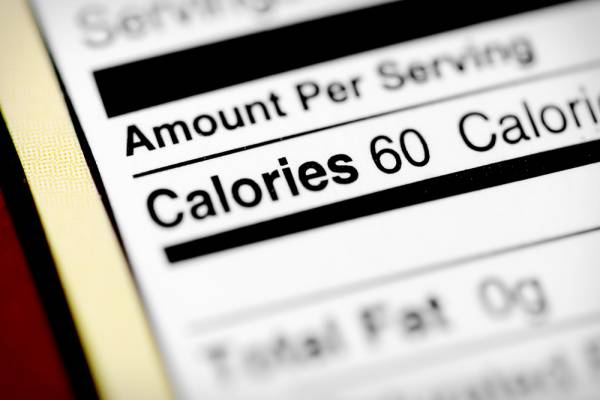New year, new you – right? Possibly, if you take the steps to set yourself up for dietary success and choose a diet that works for your lifestyle. That is, a diet that is not just another fad.
Fad noun?fad something (such as an interest) that is very popular for a short time
+
Di·et noun?d?-?t the kind and amount of food prescribed for a special reason
= short-term results, momentary happiness, eventual dissatisfaction, increased weight gain, and eventual regret.
Much like an ex-lover, you don’t realize your mistake in judgement until it’s too late and you find yourself crying in bed eating a pint of Ben & Jerry’s straight out of the carton.
RELATED: Why Dieting Is Harmful to Your Health
It’s obvious, with the amount of yo-yo dieters I come into contact with every day, that fad diets are not the white knight to most people’s weight loss struggles. But there is a way to come out of these diets in a healthy way, while maintaining results and transitioning to a healthy lifestyle.
Fad Diets Can Make You Worse
Diet companies prey on unknowing dieters looking for a way shed unwanted pounds. Although good intentioned, these dieters are unaware of the damage they are doing through their use of restricted calories, limited food groups, packaged foods, fasts, and liquid meals. The unsuccessful (or momentarily successful) diet attempt (or attempts) creates a vicious cycle of weight gain and dieting. The yo-yo dieter is created, and companies profit from the misfortune of unsuccessful dieters as the numbers on their scales continue to grow.
“Upon returning to old habits, dieters don’t just gain weight back to the point they were at when they started. They often gain beyond their starting point, ending in a worse spot than where they began.”
This is not to say you cannot achieve success in sticking to a fad diet (classified as a diet that “promises quick and substantial weight loss”), but for the majority of individuals, pre-packaged or marketed diets that fit this classification do not coincide with a healthy and balanced eating plan that teaches individuals the tools to achieve success.3
The problem with the majority of fad diets is the focus on restricted calories. In the short run, this leads to effective weight loss as excess water and body weight are lost, but eventually this caloric deficit ends at a weight-loss plateau and results wane. For many, this plateau is disheartening and frustrating, leading them to give up on the diet completely and resort to old habits.
RELATED: 7 Reasons You Aren’t Losing Weight (or Keeping It Off)
Upon returning to old habits, dieters don’t just gain weight back to the point they were at when they started. They often gain beyond their starting point, ending in a worse spot than where they began. So why does this happen and how do we avoid it?
The Problem With a Restricted Calorie Intake
When an individual is functioning under a restricted caloric intake for a substantial period the metabolism becomes compromised, thus lowering itself in order to continue to function at the level of energy input being consumed.1 Simply put, the body becomes more efficient at operating at a lower calorie intake.

What the body was once able to do with 2,000 calories a day, it’s now being forced to do with 1,000 calories a day, as your day-to-day demands don’t change because you are dieting. The body becomes accustomed to operating in this energy deficit and eventually doesn’t demand as many calories to perform basic functions as it did prior to dieting. When an individual reverts back to consuming what was once a “normal” caloric intake prior to dieting, the body no longer needs those extra calories.
RELATED: How Restricting Calories and Nutrients Affects Your Health
For dieters initially successful using a fad diet, frustration eventually arises when they are obligated to maintain this restricted calorie level, as it is now their maintenance calorie intake. At this point many individuals feel restricted by the diet and that they are sacrificing quality of life in order to maintain their weight. This is neither conducive to long-term success, nor reflective of a healthy and balanced diet and lifestyle.3
“When an individual reverts back to consuming what was once a “normal” caloric intake prior to dieting, the body no longer needs those extra calories.”
The commitment to the diet in order to maintain results can lead to a reliance on pre-packaged meals or shakes as prescribed by many diet companies. This is neither financially nor physically beneficial for long-term health and happiness. It is an unfortunate reality that many of these diets also require the purchase of a vitamin and/or fiber supplement. This reflects the lack of complete nutrition being absorbed from the prescribed foods – a red flag for avoiding nutrient deficiencies.
How to Get Out of Your Bad Fad Diet
Before you throw your hands in the air, throw away your pre-packaged and branded meal replacements, and call the pizza delivery, you can achieve success in transitioning out of a restricted-calorie fad diet back into a balanced style of eating that is realistic for life. You just have to know how to do it.
RELATED: How to Create a Healthy Relationship With Your Nutrition
The majority of branded diets don’t teach the skills to properly transition from a weight-loss phase to a maintenance phase for a number of reasons:
- Everyone is different in terms of caloric demands
- You wouldn’t return to buy their products
- Most of them don’t actually know how
Fad diets can be successful for some in achieving short-term weight loss. And if used properly, this can be a stepping-stone in a longer-term weight loss process – but only if the users take the time to transition properly and learn tools for future success.

The easiest way to explain this transition process is through the concept of “reverse dieting.” This where individuals slowly increase caloric intake over an extended period, while their metabolisms adjust to the surplus energy. Just as your metabolism becomes accustomed to function on fewer calories, when more calories are introduced in a step-by-step process, the body can become re-accustomed to operating at a higher level as it increases its metabolic capacity.4
” Just as your metabolism becomes accustomed to function on fewer calories, when more calories are introduced in a step-by-step process, the body can become re-accustomed to operating at a higher level…“
The process of reverse dieting to slowly increase calorie intake and rehabilitate a metabolism while experiencing little-to-no increase in body fat is a slow process, often demanding more self-control than the initial weight loss period, but if done properly, can be instrumental in the achievement of sustained weight loss.
Balance Is Better
I don’t recommend fad diets as they are definitely not “the solution to weight loss” they are purported to be.2 This is not to say they can’t be effective in reaching an initial weight loss goal, but for the majority of people a balanced and sustainable lifestyle change is more effective (not to mention cheaper) and more likely to lead to sustainable and healthy long-term results.
References:
1. Heilbronn LK. et al., “Effect of 6-Month Calorie Restriction on Biomarkers of Longevity, Metabolic Adaptation, and Oxidative Stress in Overweight Individuals: A Randomized Controlled Trial.” JAMA. 2006;295(13):1539-1548. doi:10.1001/jama.295.13.1539.
2. Mann T., et al. “Medicare’s Search For Effective Obesity Treatments: Diets Are Not The Answer,” American Psychologist 62, 3 (2007): 220-33. Accessed December 31, 2014.
3. Maurer T., and Subal, J., Intrepreting Weight: The Social Management of Fatness and Thinness. New York: Walter de Gruyger Inc., 1999.
4. Norton L., and Lee, S., Reverse Dieting. 2014.
Photos courtesy of Shutterstock.






